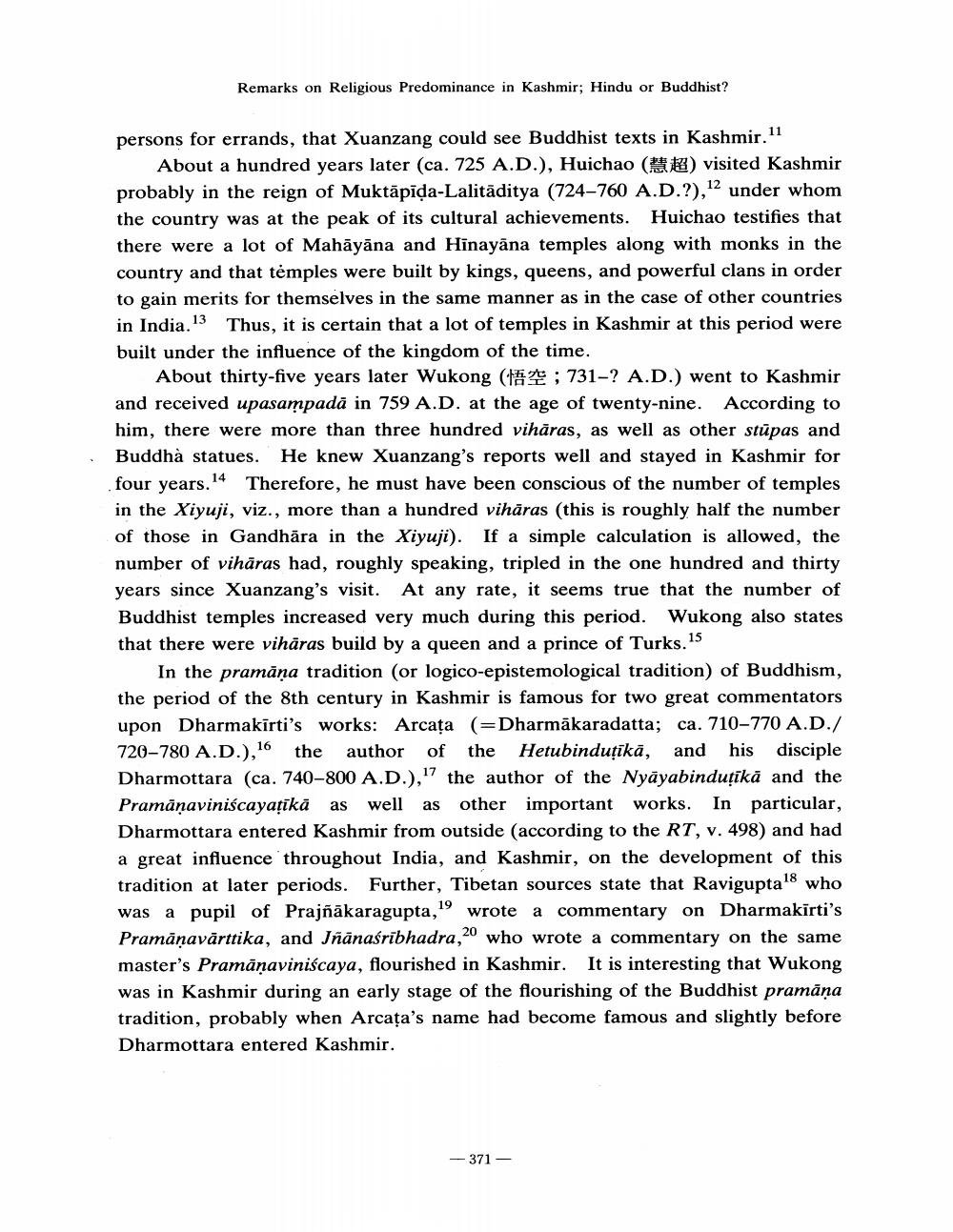Book Title: Remarks On Religious Predominance In Kashmir Hindu Or Buddhist Author(s): Toru Funayama Publisher: Toru Funayama View full book textPage 5
________________ Remarks on Religious Predominance in Kashmir; Hindu or Buddhist? persons for errands, that Xuanzang could see Buddhist texts in Kashmir. 11 About a hundred years later (ca. 725 A.D.), Huichao ( ) visited Kashmir probably in the reign of Muktāpida-Lalitāditya (724–760 A.D.?),12 under whom the country was at the peak of its cultural achievements. Huichao testifies that there were a lot of Mahāyāna and Hinayāna temples along with monks in the country and that tėmples were built by kings, queens, and powerful clans in order to gain merits for themselves in the same manner as in the case of other countries in India. Thus, it is certain that a lot of temples in Kashmir at this period were built under the influence of the kingdom of the time. About thirty-five years later Wukong (1 ; 731-? A.D.) went to Kashmir and received upasampadā in 759 A.D. at the age of twenty-nine. According to him, there were more than three hundred vihāras, as well as other stūpas and Buddhà statues. He knew Xuanzang's reports well and stayed in Kashmir for four years. 14 Therefore, he must have been conscious of the number of temples in the Xiyuji, viz., more than a hundred vihāras (this is roughly half the number of those in Gandhāra in the Xiyuji). If a simple calculation is allowed, the number of vihāras had, roughly speaking, tripled in the one hundred and thirty years since Xuanzang's visit. At any rate, it seems true that the number of Buddhist temples increased very much during this period. Wukong also states that there were vihāras build by a queen and a prince of Turks.15 In the pramāņa tradition (or logico-epistemological tradition) of Buddhism, the period of the 8th century in Kashmir is famous for two great commentators upon Dharmakīrti's works: Arcața (=Dharmākaradatta; ca. 710-770 A.D./ 720-780 A.D.), 16 the author of the Hetubinduțīkā, and his disciple Dharmottara (ca. 740-800 A.D.)," the author of the Nyāyabinduţikā and the Pramāņaviniscayaţikā as well as other important works. In particular, Dharmottara entered Kashmir from outside (according to the RT, v. 498) and had a great influence throughout India, and Kashmir, on the development of this tradition at later periods. Further, Tibetan sources state that Ravigupta18 who was a pupil of Prajñākaragupta," wrote a commentary on Dharmakirti's Pramāņavārttika, and Jñānaśrībhadra 20 who wrote a commentary on the same master's Pramāņaviniscaya, flourished in Kashmir. It is interesting that Wukong was in Kashmir during an early stage of the flourishing of the Buddhist pramāņa tradition, probably when Arcața's name had become famous and slightly before Dharmottara entered Kashmir. - 371 —Page Navigation
1 ... 3 4 5 6 7 8 9
